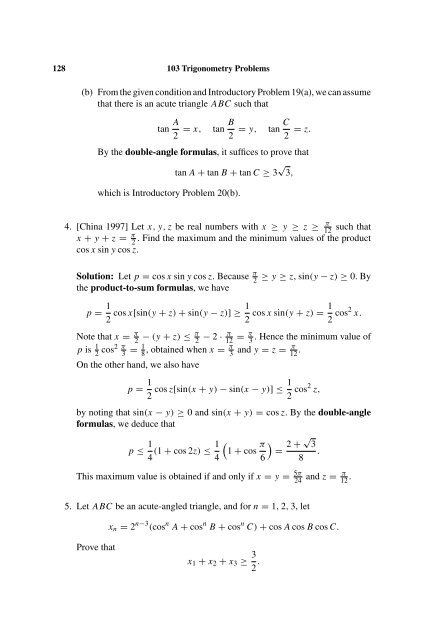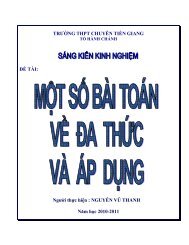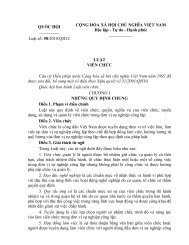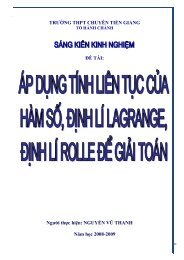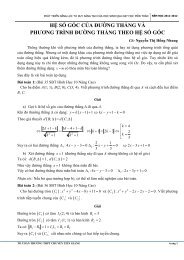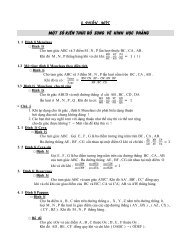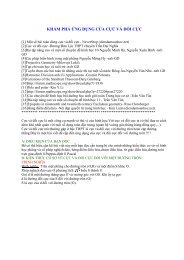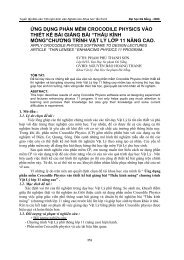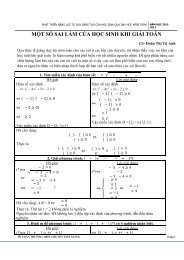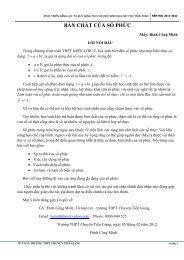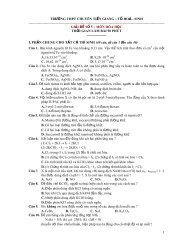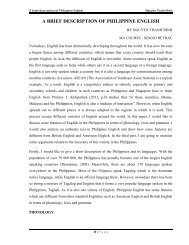103 Trigonometry Problems
103 Trigonometry Problems
103 Trigonometry Problems
Create successful ePaper yourself
Turn your PDF publications into a flip-book with our unique Google optimized e-Paper software.
128 <strong>103</strong> <strong>Trigonometry</strong> <strong>Problems</strong><br />
(b) From the given condition and Introductory Problem 19(a), we can assume<br />
that there is an acute triangle ABC such that<br />
tan A 2 = x, tan B 2 = y, tan C 2 = z.<br />
By the double-angle formulas, it suffices to prove that<br />
tan A + tan B + tan C ≥ 3 √ 3,<br />
which is Introductory Problem 20(b).<br />
4. [China 1997] Let x,y,z be real numbers with x ≥ y ≥ z ≥<br />
12 π such that<br />
x + y + z = π 2<br />
. Find the maximum and the minimum values of the product<br />
cos x sin y cos z.<br />
Solution: Let p = cos x sin y cos z. Because π 2<br />
the product-to-sum formulas,wehave<br />
≥ y ≥ z, sin(y − z) ≥ 0. By<br />
p = 1 2 cos x[sin(y + z) + sin(y − z)] ≥1 2 cos x sin(y + z) = 1 2 cos2 x.<br />
Note that x = π 2 − (y + z) ≤ π 2 − 2 · π12 = π 3<br />
. Hence the minimum value of<br />
p is<br />
2 1 cos2 π 3 = 1 8 , obtained when x = π 3 and y = z = 12 π .<br />
On the other hand, we also have<br />
p = 1 2 cos z[sin(x + y) − sin(x − y)]≤1 2 cos2 z,<br />
by noting that sin(x − y) ≥ 0 and sin(x + y) = cos z. Bythedouble-angle<br />
formulas, we deduce that<br />
p ≤ 1 4 (1 + cos 2z) ≤ 1 4<br />
(<br />
1 + cos π )<br />
6<br />
= 2 + √ 3<br />
.<br />
8<br />
This maximum value is obtained if and only if x = y = 5π<br />
24 and z = π 12 .<br />
5. Let ABC be an acute-angled triangle, and for n = 1, 2, 3, let<br />
x n = 2 n−3 (cos n A + cos n B + cos n C) + cos A cos B cos C.<br />
Prove that<br />
x 1 + x 2 + x 3 ≥ 3 2 .


